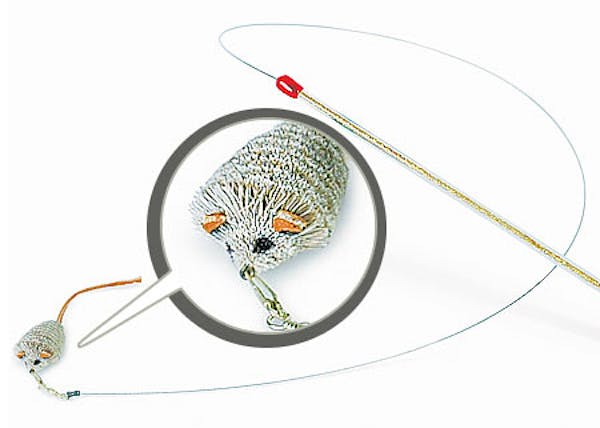Pet experts are unanimous in the opinion that indoor cats are happier, healthier and live longer. The Humane Society of the United States puts "Keep your cats indoors" at number three on its "Top 10 Essentials" list for "Caring for Your Cat." It provides information on various enclosure and fencing options on its website, www.hsus.org. (search on "Fence Me In").
While I would much prefer that my cats stay inside, I have, on occasion, decided that the risk of "letting" the cat go outside was lower than the risk of decapitating him while trying to keep him indoors. Last summer, though, I acquired a very small lake cabin on a very large lot. My choices are to be at the cabin missing my cats, or to take the cats to the cabin and find restricted backyard access.
Shocking options
None of the Humane Society's options include electronic or invisible fences, although many websites contain testimonials from satisfied owners about how quickly Kitty adjusted to the collar and learned her boundaries. These systems are designed to deliver a clicking noise followed by a shock when the cat gets close to the perimeter. While a dog will probably recoil from the shock, it seems to me that a cat is just as likely to go straight up in the air and come down on the far side of the fence. At that point, you're left with a frightened and mistrustful cat that is going to be very hard to talk into coming home. Invisible fences also don't keep predators out.
For an area that is already fenced in, there are several companies offering add-ons designed to keep Kitty from crawling up and over. The companies disagree about what makes a fence cat-proof, however. Affordable Cat Fence (www.catfence.com) says cats will not climb upside down. The Affordable Cat Fence system consists of mesh strung between poles that angle back into the yard. The system can be added to "any height wood, masonry, wire or chain link fence," at a cost of about two dollars per linear foot, according to the website.
The folks at Cat Fence-In (www.catfencein.com) say that cats actually can climb backwards. What they won't climb is anything that looks "flimsy." Its polypropylene netting, attached to the top of existing fencing, purports to keep cats in as well as keeping other cats out.
Tool time
The theory of what keeps cats in a fence is interesting, but I don't have an existing fence near the cabin, so these options won't work for me. If I were handier with tools, I might order a set of plans for a Safe Cat Outdoor Enclosure (www.just4cats.com). The website says that I will get "more than 65 detailed drawings" for $25. The photos on the site show lots of completed projects submitted by satisfied owners. The combination of wire fence and 1 x 4 lumber isn't exactly beautiful, and it definitely looks like a project for someone with better do-it-yourself credentials than mine.
The Kittywalk System is a no-tools alternative. The website says it's "made of sturdy industrial strength fishnet, weaved to a steel hoop-shaped wicket that easily stakes firmly into the ground." The whole works folds flat and comes with a carrying case. The basic module is a long tunnel that can be linked to other tunnels with curved or t-shaped connectors. A kitty penthouse or gazebo can be added for shade and lounging. The website (www.kittywalksystems .com) shows a range of configurations. Although it's not on the Humane Society links page, Kittywalk products are sold by Drs. Foster and Smith, the online pet supply site. This idea has appeal - I can start small, see how it works and add on over time.
In our own backyard
Eventually, the system I'd like to get is the Do-It-Yourself Cat Fence provided by the Feral Cat Coalition (www.feralcat.com/fence.html). There are instructions for cat-proofing an existing chain link fence or wooden privacy fence, or for building a chicken wire fence from scratch. The secret ingredient is garden netting that is made and sold by Industrial Netting, right here in Minneapolis. (Industrial Netting also supplies the netting for the Affordable Cat Fence.) The netting is an "environmentally passive" product used for everything from keeping deer out of blueberry fields to keeping birds away from airline maintenance hangars. For more information, check out www.industrialnetting.com
I will be experimenting this summer. If Pet Central readers have found something that works, I'd love to hear about it! E-mail petcentral@startribune.com.
Laura French is a freelance writer who lives in Roseville with three cats - Gracie, Tennessee Tuxedo and his pal Chumley, and Sofie, whose breed(s) will forever remain a mystery.
